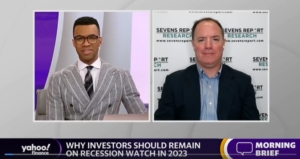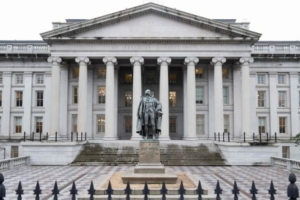Are Junk Bonds Signaling Recession?
What’s in Today’s Report:
- Are Junk Bonds Signaling Recession?
- What Does Terminal Fed Funds Mean in Plain English?
Futures are modestly higher on solid tech earnings and after another global central bank ended rate hikes.
Nvidia (NVDA) earnings beat estimates and the stock us up 8% pre-market, and that’s helping general tech sentiment.
South Korea’s central bank ended its rate hike campaign and while that’s not a major central bank, it’s another reminder the global hiking cycle is ending.
Focus today will remain on economic data and Fed speak and that includes Jobless Claims (E: 200K) and Revised Q4 GDP (E: 2.9%). Fed speakers include Bostic (10:50 a.m. ET) and Daly (2:00 p.m. ET) and as has been the case for two weeks, any data or comments that increase rate hike expectations will pressure stocks (and vice-versa).


